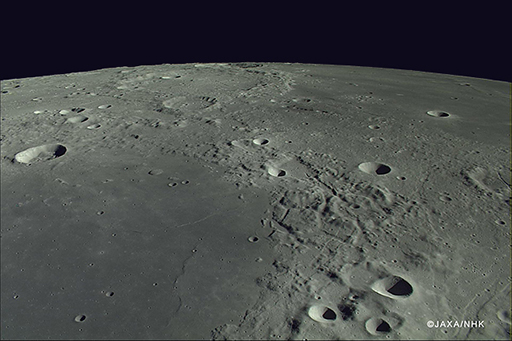4.1 A changing moonscape
Look at Figure 49, of the surface of the Moon. What do you notice about the number and size of craters across the image? Is there a difference between one part of the image and another? Why might this be?

This image shows the ancient lunar highland region to the right, with the younger, darker basaltic ‘mare’ (pronounced ‘MAH-ray’, Latin for ‘sea’) to the left. Because of the Latin origin of the word, the plural of mare is maria (pronounced ‘MAH-ria’). Early observers saw these dark smooth surfaces and guessed wrongly that they might be seas, hence the name.
The reason why there are so few craters on the left is that this area was flooded by volcanic lava after most of the impact craters were formed.
If you wanted to look into this further, you might find the following link of interest: Kaguya fly-over of Tycho crater [Tip: hold Ctrl and click a link to open it in a new tab. (Hide tip)] . To see more examples of lunar craters, watch this superb fly-over tour of the crater Tycho.
